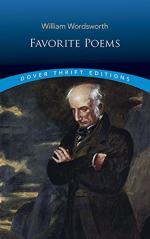|
This section contains 400 words (approx. 1 page at 400 words per page) |

|
Lines Written a Few Miles Above Tintern Abbey Summary & Study Guide Description
Lines Written a Few Miles Above Tintern Abbey Summary & Study Guide includes comprehensive information and analysis to help you understand the book. This study guide contains the following sections:
This detailed literature summary also contains Quotes and a Free Quiz on Lines Written a Few Miles Above Tintern Abbey by William Wordsworth.
The version of the poem used to create this study guide appears in: Applebaum, Stanley, editor. English Romantic Poetry: An Anthology. Dover Publications, Inc., 1996.
Note that parenthetical citations within the guide refer to the lines of the poem from which the quotations are taken.
William Wordsworth’s “Lines Composed a Few Miles Above Tintern Abbey” was originally inspired by a tour the poet and his sister, Dorothy, took of the River Wye along the English and Welsh border. This visit came five years after Wordsworth’s first trip to the area when he was 23 years old. The poet uses the perspective gained between the two trips in order to explore his developing philosophical views of nature. Originally written in 1798, the poem was something of a precursor for what was to come from Wordsworth during the peak of his creative output.
The poem begins with the speaker declaring that five years have passed since the last time they found themselves along the banks of the River Wye. They revel in the fact that the landscape remains relatively untouched in its sheer majesty and beauty. More than the physical beauty of the landscape, however, they celebrate the emotional connection they have forged with the river. Since their first visit, there have been many instances where visions of the Wye have instilled in them a sense of calm and tranquility. Even during this visit they take pleasure in the fact that the restoration of these visions will be able to provide them with future comfort.
The speaker’s relationship with the landscape was not always as it is now, however. They go into great detail as they describe how they used to interact with nature in their youth, full of energy and vibrancy but lacking a more deliberate or conscientious engagement with the landscape. While they no longer possess the same exuberance as they did in their boyish days, they still consider themselves to be a lover of nature because of the spiritual and moral fulfillment it provides for them. As the poem reaches its end, the speaker shifts their attention toward their sister, who accompanies them on this tour. They express their affection for their sister, and remind her that in the future, should they become separated in life or in death, they will always be connected by experiences such as these that they share with one another.
Read more from the Study Guide
|
This section contains 400 words (approx. 1 page at 400 words per page) |

|



